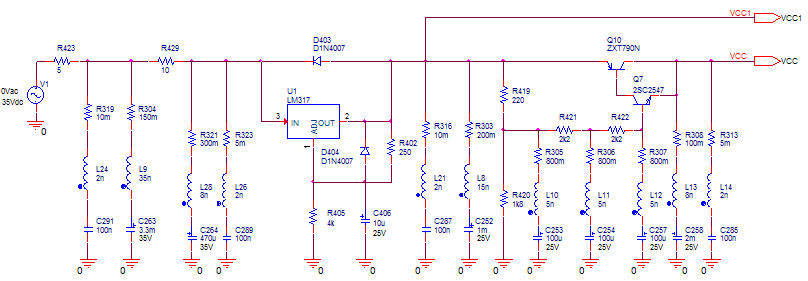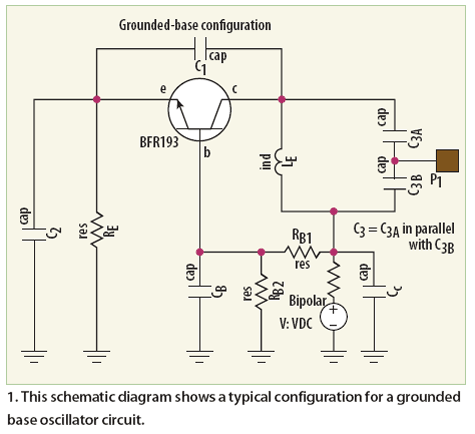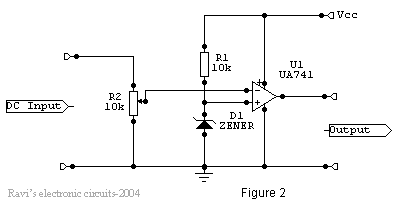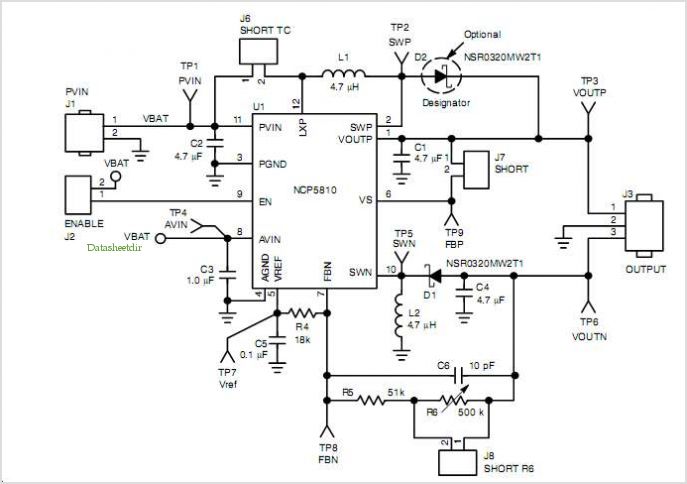
low ripple regulated power supply
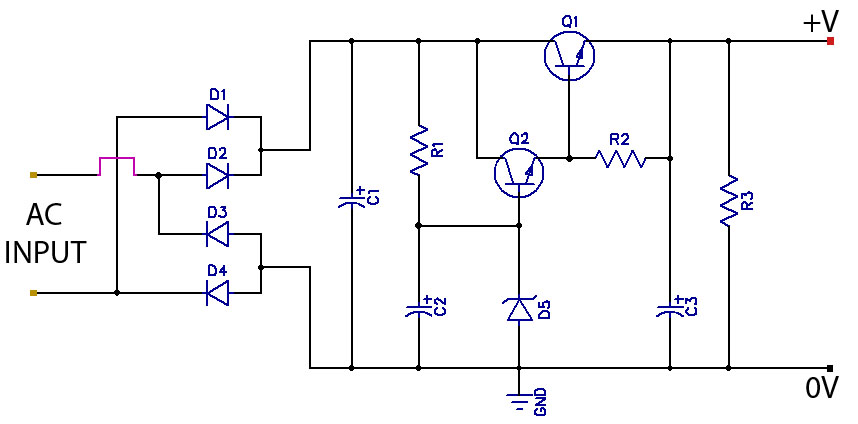
The value of capacitor C2 can be selected to achieve the desired level of smoothness, as its capacitance is effectively amplified by the combined gains of transistors Q1 and Q2. For instance, if a capacitance of 100 µF is selected for C2, it is assumed that the minimum hybrid equivalent feedback (hef) for both Q1 and Q2 is utilized.
The schematic involves a configuration where capacitor C2 plays a crucial role in filtering and stabilizing the output voltage of the circuit. The transistors Q1 and Q2 are typically configured in a common-emitter or common-collector arrangement, where their gains are pivotal in determining the overall performance of the circuit. The combined gain of these transistors influences the effective capacitance seen at C2, enhancing its role in smoothing out voltage fluctuations.
In practical applications, selecting a larger capacitance value for C2, such as 100 µF, can significantly improve the transient response of the circuit, allowing it to better handle variations in load and input conditions. The minimum hef values for Q1 and Q2 should be carefully considered, as they will directly affect the circuit's stability and response time. Proper biasing of the transistors is essential to ensure that they operate within their optimal ranges, thus maximizing the effectiveness of C2 in achieving the desired smooth output.
Additionally, the choice of C2's value should take into account the operating frequency of the circuit. Higher capacitance values may introduce delays in response time, which could affect high-frequency performance. Therefore, a balance must be struck between the desired smoothness and the dynamic response of the circuit, ensuring that the selected capacitance aligns with the overall design objectives.C2 can be chosen for the degree of smoothness as its value is effectively multiplied by the combined gains of Q1/Q2, if 100 µF is chosen for C2, assuming minimum hef for Q1 and Q2, 🔗 External reference
The schematic involves a configuration where capacitor C2 plays a crucial role in filtering and stabilizing the output voltage of the circuit. The transistors Q1 and Q2 are typically configured in a common-emitter or common-collector arrangement, where their gains are pivotal in determining the overall performance of the circuit. The combined gain of these transistors influences the effective capacitance seen at C2, enhancing its role in smoothing out voltage fluctuations.
In practical applications, selecting a larger capacitance value for C2, such as 100 µF, can significantly improve the transient response of the circuit, allowing it to better handle variations in load and input conditions. The minimum hef values for Q1 and Q2 should be carefully considered, as they will directly affect the circuit's stability and response time. Proper biasing of the transistors is essential to ensure that they operate within their optimal ranges, thus maximizing the effectiveness of C2 in achieving the desired smooth output.
Additionally, the choice of C2's value should take into account the operating frequency of the circuit. Higher capacitance values may introduce delays in response time, which could affect high-frequency performance. Therefore, a balance must be struck between the desired smoothness and the dynamic response of the circuit, ensuring that the selected capacitance aligns with the overall design objectives.C2 can be chosen for the degree of smoothness as its value is effectively multiplied by the combined gains of Q1/Q2, if 100 µF is chosen for C2, assuming minimum hef for Q1 and Q2, 🔗 External reference
